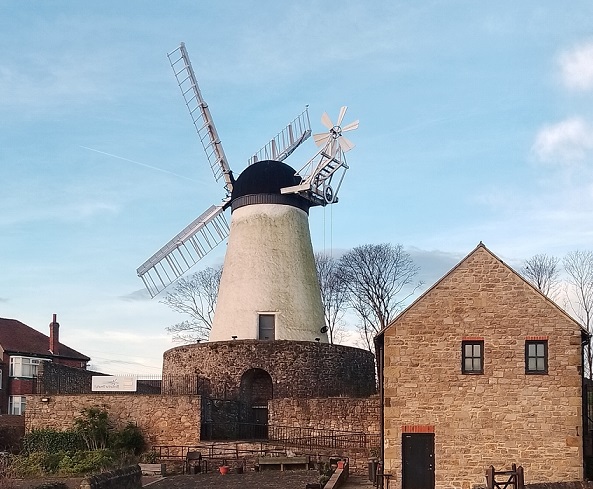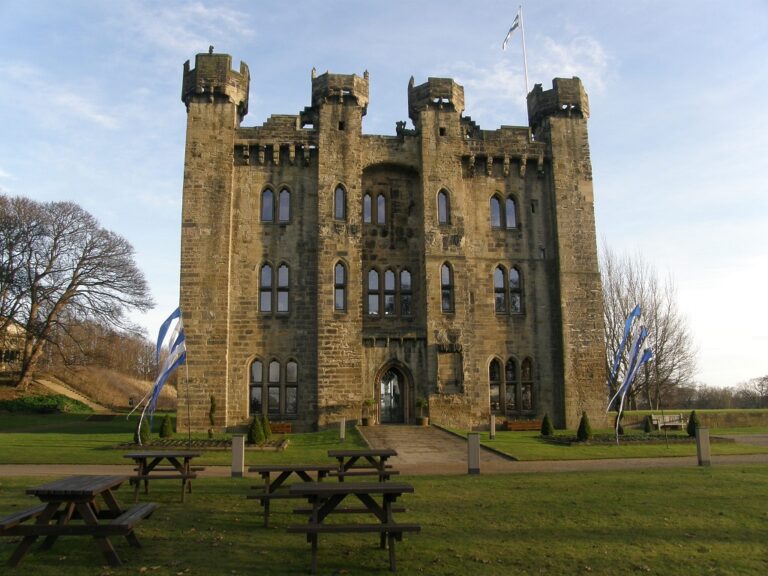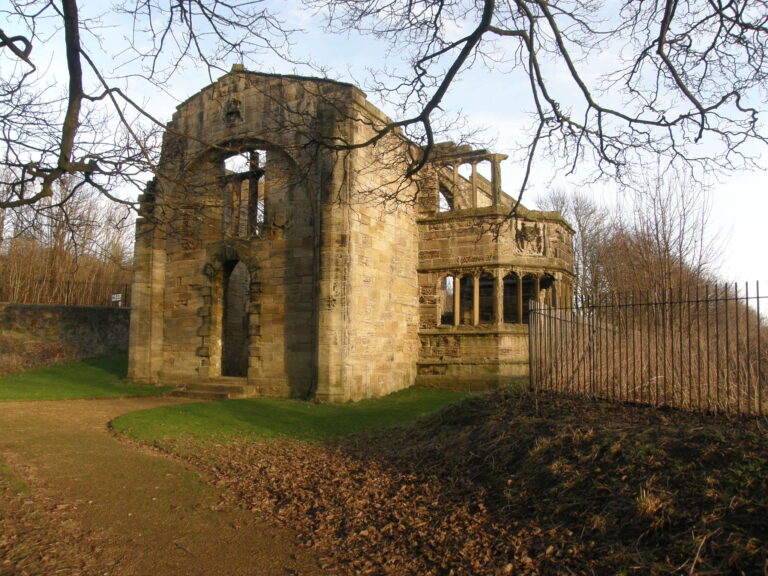A Bit of History
Fulwell Windmill is a beautifully restored 19th-century windmill nestled in the Fulwell area of Sunderland. Built in 1808 by a local millwright named Joseph Swan, this five-storey tower mill played a crucial role in the community by grinding corn and other grains for nearly a century.
Originally equipped with four sails and a traditional milling mechanism, the windmill was a hub of agricultural activity. It operated until 1949, when changes in technology and industry led to its closure. Over time, the structure fell into disrepair, but thanks to the dedication of local enthusiasts and the Sunderland City Council, it underwent extensive restoration.

Reopened to the public, Fulwell Windmill now stands as a proud symbol of Sunderland’s rich industrial heritage, offering visitors a glimpse into the past and the chance to learn about traditional milling processes.
What to Expect When You Visit
- Guided Tours: Step inside the windmill and explore its fascinating interior. Knowledgeable guides will walk you through each level, explaining how the milling machinery worked and sharing intriguing stories about the mill’s history.
- Interactive Exhibits: Educational displays make the experience engaging for all ages. Kids and adults alike can learn about the science of wind power and the art of milling.
- Scenic Surroundings: The windmill is surrounded by pleasant green spaces. It’s a lovely spot for a leisurely walk, a family picnic, or some peaceful contemplation.
Fulwell Windmill: Weathering the Storm
The Windmill has endured its fair share of challenges over the years, including damage caused by severe weather events.
The Storm of 2011
In September 2011, remnants of Hurricane Katia swept through the region, bringing with it winds reaching up to 70 mph. These powerful gusts proved too much for the historic windmill, causing significant damage to its sails. The force of the storm not only disrupted the structure’s iconic appearance but also raised concerns about the overall stability of the windmill.
Efforts to Restore and Preserve
After the storm, a large-scale restoration project was launched to repair the damage and safeguard the windmill for future generations. Sunderland City Council spearheaded the initiative, focusing on replacing the broken sails and addressing other structural vulnerabilities revealed by the storm. This restoration was part of a broader plan to rejuvenate the windmill and transform it into a key heritage attraction.
By 2018, Fulwell Windmill was fully restored, complete with functioning sails and additional structural improvements. The restoration also included the addition of a visitor center and tearoom, enhancing the overall experience for those keen to explore the site’s history.
A Landmark Reborn
Today, Fulwell Windmill stands as a testament to Sunderland’s commitment to preserving its industrial heritage. Following the restoration, it became the only working windmill in the North East of England, offering visitors an authentic glimpse into the past.
While the weather posed a significant challenge in 2011, the community’s dedication ensured that this historic gem was not only repaired but also revitalized, making it a proud symbol of resilience and history in the area.
Events and Activities
Fulwell Windmill often hosts a variety of events throughout the year:
- Heritage Open Days: Special events where you might get access to areas not usually open to the public.
- Workshops: Occasionally, there are workshops on traditional crafts, baking, or milling techniques.
- Family Fun Days: Activities for children, including arts and crafts, storytelling, and sometimes even dressing up in period costumes!
Be sure to check the latest event schedule by contacting them directly or visiting their official webpage.
Contact Details
- Address:
Fulwell Windmill Windmill View, Fulwell Sunderland, SR6 9PX United Kingdom - Phone: 0191 537 3231
- Email: While a direct email isn’t listed, you can reach out through the Sunderland City Council’s contact optionsor visit their Facebook page
- Website: Visit the Sunderland City Council’s website and search for Fulwell Windmill for the most up-to-date information.
Opening Hours
- Visiting Times: Opening hours can vary, especially with seasonal changes or special events. It’s a good idea to call ahead or check online before planning your visit.
- Admission: Entry is typically free, but donations are greatly appreciated to help with the upkeep and preservation of this historical gem.
Getting There
- By Car: There’s limited on-street parking available nearby. Just plug the postcode SR6 9PX into your GPS.
- By Public Transport:
- Bus: Several local bus routes stop close to the windmill.
- Metro: The Seaburn Metro Station is within walking distance, making it easily accessible.
Why Visit Fulwell Windmill?
Visiting Fulwell Windmill is like stepping into a time machine that takes you back to the early 1800s. Here’s why it’s worth your time:
- Educational Experience: Learn about traditional milling and how wind power was harnessed before the age of electricity.
- Historical Insight: Gain appreciation for Sunderland’s industrial past and the community’s efforts to preserve it.
- Family-Friendly Fun: It’s a great outing for all ages, combining education and entertainment.
- Photography Opportunities: The windmill’s classic silhouette against the sky makes for stunning photos!
Send us your photos
If you visit Fulwell Windmill, we’d love to publish one of your photos in our gallery. Get in touch using our Contact page.
![{"capture_mode":"AutoModule","faces":[]}](https://discoversunderland.com/wp-content/uploads/2025/01/Molly.jpg)


![{"capture_mode":"AutoModule","faces":[]}](https://discoversunderland.com/wp-content/uploads/2025/04/boating_lake_Roker_Park-768x704.jpg)
